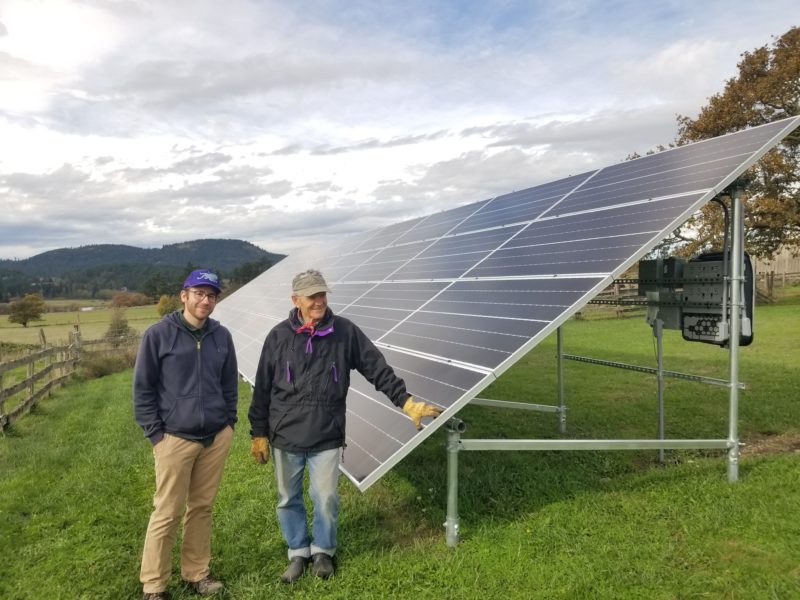We’re harvesting kilowatt-hours at Red Mill Farm.

Soaking up some rays: Rob Roy McGregor and Thom Pence inspect the new solar panels | Staff archive
The Preservation Trust, like many land conservation organizations across the country, is trying to figure out how to integrate sustainable power generation with our conservation work. One obstacle is past conservation agreements that often don’t permit structures to be built in places that offer good solar exposure. Recently, on Red Mill Farm Preserve, SJPT staff found a good way to install a small- to medium-size solar array in a place where our conservation easement allows us to create this kind of structure.
Power consumption at Red Mill Farm is roughly 35,000 kilowatt-hours per year. (One kilowatt-hour is the amount of energy you’d use if you kept a 1,000-watt appliance, such as a small toaster oven, running for one hour.) After the full system is built—only half is built so far—it will offset the farm’s total energy consumption.
Our electricity usage has been relatively low, but we wanted to make Red Mill Farm Preserve as carbon-neutral as possible as we seek to reduce our organization’s contribution to climate change. Demand for electricity in the Pacific Northwest is ever on the rise, and we all need to grapple with the fact that the region’s main power source—hydropower from dams on the Columbia and other rivers—will likely decline due to renegotiated water treaties, drought, and possible breaching of dams to help endangered orcas and salmon. By converting to solar power, organizations and private homeowners can help meet our utility company’s increased electricity demand with renewable energy instead of fossil-fuel alternatives.
We’ll be looking for opportunities to “grow” more green energy on SJPT-protected land in the future.
